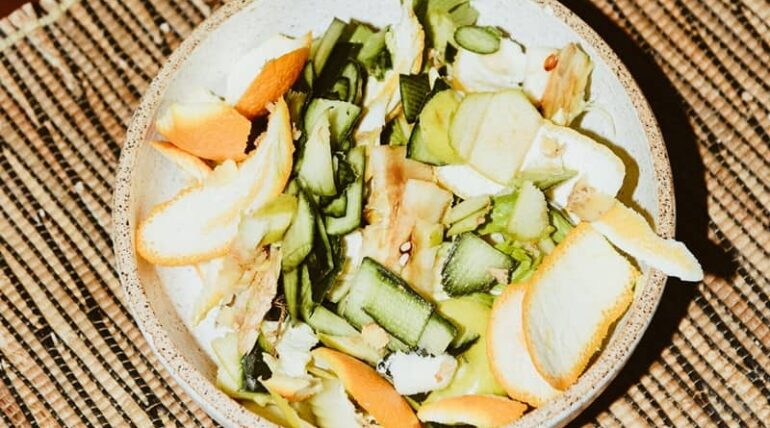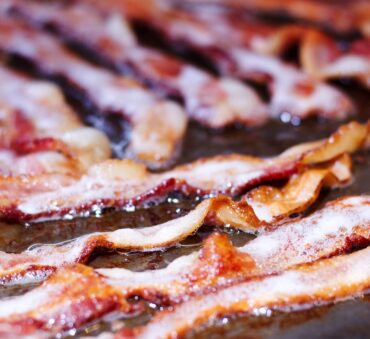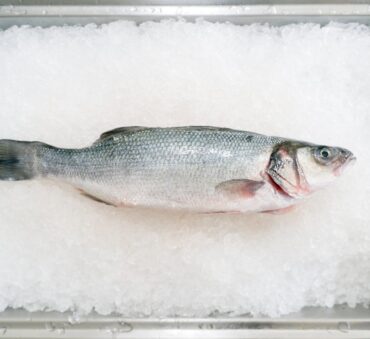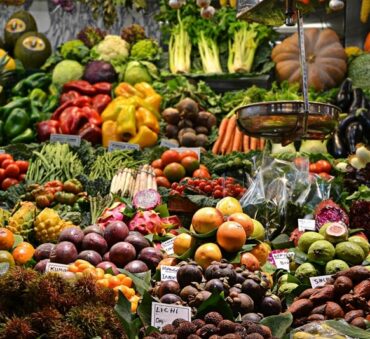Did you know that one-third of all food in the United States goes uneaten?
While food waste occurs at different stages of the supply chain, household food scraps are a huge contributor to the problem. In fact, the average household wastes 6.2 cups of food in a typical week, costing the average American family of four $1,500 in uneaten food every year.
Recycling food scraps has emerged as a sustainable solution to this issue, showing great potential for diverting food from landfills and keeping valuable resources in circulation when done properly. Keep reading to explore food scrap recycling in more detail, where we’ll discuss how to recycle food scraps, recycling programs in the U.S., and large-scale initiatives.
Key Takeaways
- Food scrap recycling is the process of converting food scraps that would otherwise be discarded into compost. In addition to minimizing landfill use and reducing greenhouse gas emissions, composting improves plant health and reduces the need for synthetic fertilizers, making it a great solution in the agricultural sector.
- To create a nutrient-rich compost, individuals must build a compost pile that has the right balance of brown and green materials, add moisture to the pile when necessary, and regularly turn the pile to ensure air circulation. If the pile has slow decomposition, it may be due to an improper brown-to-green ratio, moisture, or frequency of turns.
- There are a growing number of recycling programs throughout the United States that support waste reduction efforts. Local initiatives may include composting facilities, collection services that pick up organic waste from households, school composting programs, or shared compost bins.
- Businesses that generate large amounts of food scraps can explore various recycling approaches, including on-site composting, collaborating with local composting facilities, or participating in municipal organic waste programs.
What Are Food Scraps?
Food scraps are parts of food items that are typically discarded, including leftover bits of food from meal preparation and consumption. This includes vegetable peels, fruit skins, eggshells, seeds, pits, and coffee grounds, among others.
Food scraps differ from other types of kitchen waste due to their organic material. Their ability to decompose naturally makes them eligible for food scrap recycling methods like composting. Other types of waste, such as packaging or non-recyclable plastics, do not fall into this category due to their distinct decomposition processes. The only exception would be edible packaging that consists of naturally biodegradable materials.
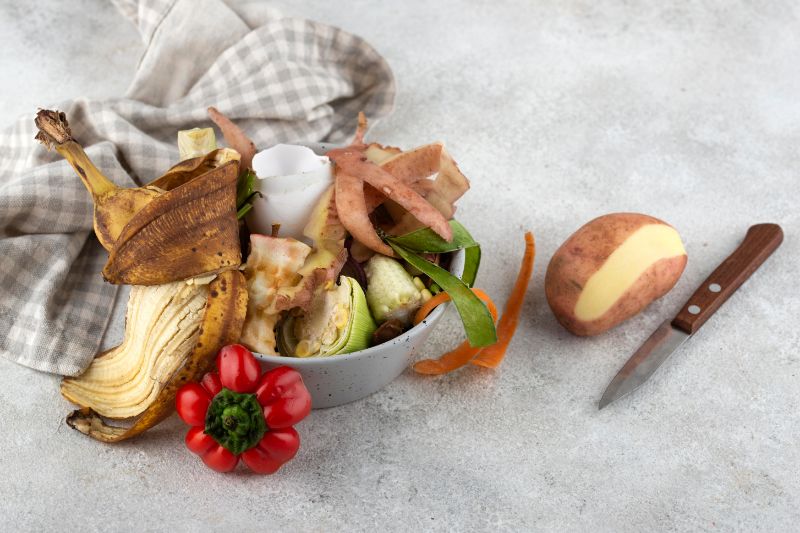
Understanding Food Scrap Recycling
Food scrap recycling is the process of reusing biodegradable food waste and transforming it into valuable compost. As mentioned, this includes food that is discarded during preparation and consumption, which includes peels, rinds, cores, eggshells, seeds, pits, coffee grounds, loose-leaf tea, and plate scraps such as bread, pasta, soup, and more.
There are many benefits to recycling food scraps, including its role in minimizing landfill use, reducing greenhouse gas emissions, and preventing pollution. In addition, compost is a nutrient-rich soil amendment that improves plant health, making it a great solution in the agricultural sector.
How to Recycle Food Scraps
As many people navigate food scrap recycling for the first time, there’s the lingering question of what to do with leftover food scraps.
Keep reading to learn how to prepare your food scraps for recycling, tips for composting, solutions to common problems, and the importance of recycling programs in the United States.
Preparing to Recycle Your Food Scraps
The first step in food scrap recycling is collecting and storing household food waste. There are multiple methods that you can choose from, depending on the amount of food scraps you generate, how often you empty your container, and space limitations.
You can opt for a small kitchen caddie, freeze food scraps until they’re ready to be composted, or purchase a large compost bin. Setting up a designated area to collect scraps is also important, whether it’s your kitchen counter, under your sink, or in an alternative area of the house that has more space.
To prevent odors and pests, adopting proper hygiene measures can help maintain a sanitized environment, which include lining the container with a compostable bag, cleaning it regularly, and using an airtight lid.

Composting Food Scraps
To create a food scraps composting pile, follow these steps:
- Gather brown and green materials: Composting piles require both brown and green materials. Green materials are nitrogen-rich, like food scraps, while brown materials are carbon-rich, like dry leaves, straws, wood chips, and shredded paper. Your compost pile should have 3 parts brown material for every 1 part green material.
- Add moisture: The key to a successful compost is adding moisture to the pile when necessary. A good rule of thumb is that the pile should be as damp as a wrung-out sponge.
- Turn pile: Turn the pile occasionally to ensure air circulation and increase the decomposition rate.
- Harvest compost: When your compost is ready to be harvested, its texture and scent will change. It should have an earthy smell, crumbly texture, and a rich dark brown color.
When your nutrient-rich compost is ready to use, there are various ways you can incorporate it into your home. Composted food waste can be used as mulch, as a fertilizer for lawns, to revive potting mixes, and to amend soil to improve plant health.
Troubleshooting Common Issues
There are many challenges you may come across as you start your food scrap recycling journey, but what’s important is that you know how to manage them for optimal results. Common obstacles include:
- Odors: If your compost pile has a bad odor, you may need to add more brown material to maintain a better balance, turn your pile more frequently, and avoid certain items that could be generating bad odors, such as meat and dairy products. To prevent odors in your home, keep your food scrap container sanitized and empty it regularly.
- Pests: To prevent unwanted pests, you should avoid putting meat, bones, fats, dairy products, or animal waste into your compost pile. You should also keep your food scraps covered with brown material to absorb odors and prevent the scraps from being exposed.
- Slow decomposition: If your compost pile is not breaking down as quickly as expected, it might lack sufficient moisture or aeration. To promote decomposition, turn your pile regularly, add water to increase moisture (or dry material if the pile is too damp), ensure you have the right ratio of brown to green material, and break down food scraps to facilitate the process.
Food Scraps Recycling Programs in the US
There are a growing number of recycling programs throughout the United States that support waste reduction efforts. Community- or city-level initiatives are a great option for those who want to reduce their environmental footprint but don’t have the space for at-home food scraps composting.
There are different types of community initiatives available, which may include a local composting facility, collection services that pick up organic waste from households, school food scraps composting programs, or shared compost bins. These recycling programs help raise awareness, bring the community together, and divert food from landfills, making them an important aspect of reaching sustainability goals.
If you’re interested in food scrap recycling programs, we recommend researching what local initiatives are available or creating your own program to get the community involved.
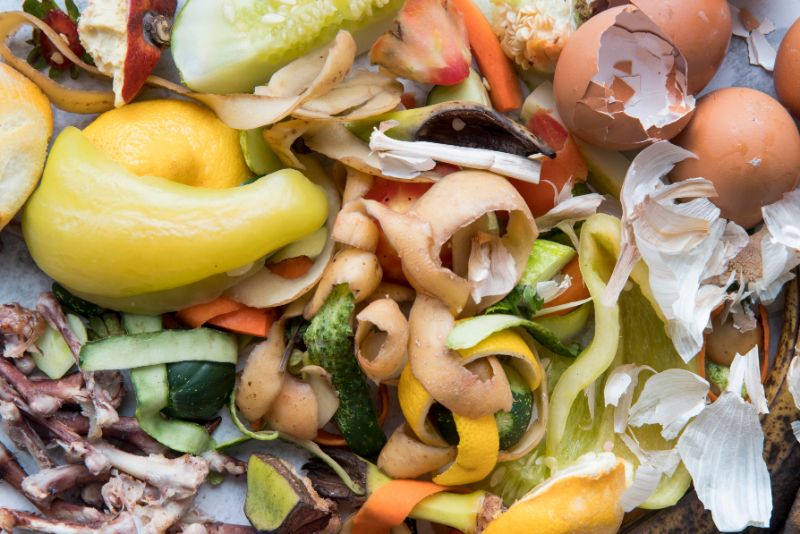
Other Ways to Reduce Food Waste
While it’s crucial to recycle food scraps, reducing food waste at the source should always be the top priority. Follow these tips to reduce household waste:
- Meal plan: Create shopping lists and purchase only the necessary ingredients to minimize overbuying and avoid purchasing perishable foods that may spoil before use.
- Purchase imperfect produce: Ugly fruits and vegetables are often discarded due to strict aesthetic expectations, leading to large losses along the supply chain. When you purchase ugly produce, you’re helping set new industry standards and reducing the waste associated with it.
- Improve storage methods: To prevent household waste and extend the shelf life of ingredients, store food in airtight containers, keep food items at the right temperature, and organize your pantry to ensure you eat older food items first.
- Repurpose ingredients: Instead of discarding extra ingredients, get creative and create new recipes. This prevents waste and helps you save money on groceries.
- Food donation and sharing: Donating surplus food is a great way to give back to your community and reduce food insecurity. Check local food donation regulations to ensure you follow proper protocols.
- Food waste apps: Using apps to address food waste has become increasingly popular due to their practical solutions that are easily accessible. Common apps include grocery shopping apps, donation platforms, food waste tracking apps, apps that help users buy unsold food from local eateries at a discounted price, community sharing apps, and more.
- Feed food waste to chickens: Chickens reduce food waste and support a circular economy by turning kitchen scraps into eggs for protein. As a bonus, chicken manure supports sustainable gardening practices by providing essential nutrients to your plants.
Why Recycle Food Scraps?
Food waste has severe consequences, including natural resource depletion, pollution, economic losses throughout the supply chain, and its contribution to food insecurity. In addition, food ending up in landfills undergoes a decomposition process that produces methane emissions, a powerful greenhouse gas that contributes to global warming.
For the above reasons, diverting waste from landfills is a top priority in sustainability efforts. Aside from reduced landfill use, composting provides additional benefits, including soil enrichment and healthier agricultural practices.
To reduce waste, individuals, small businesses, and large organizations alike can make small changes in how they handle and manage kitchen waste, contributing to significant environmental benefits.
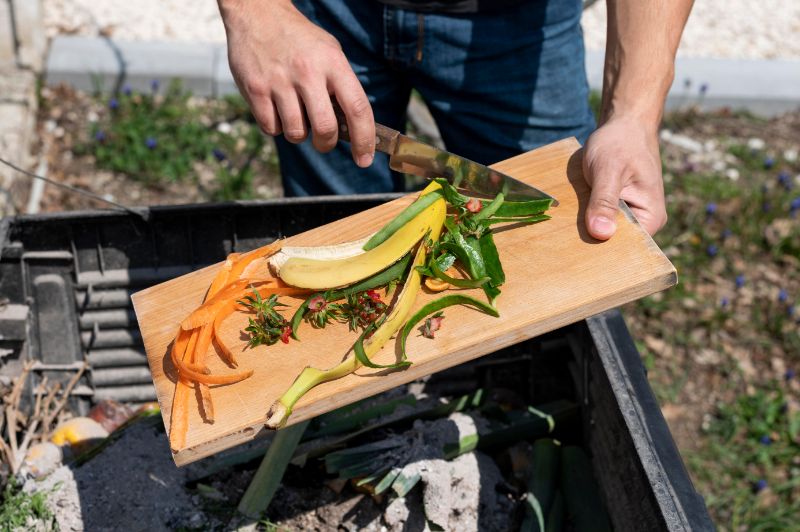
Large-Scale Food Scrap Recycling
There are various businesses that generate large quantities of food scraps, which include both pre-consumer waste (such as trimmings from food preparation) and post-consumer waste (like leftovers from plates).
In general, restaurants, supermarkets, food production facilities, and cafeterias in large institutions like universities and hospitals are large contributors to waste, each with distinct factors influencing their waste generation. For instance, grocery store waste is often due to inefficient inventory systems, improper storage techniques, and confusion regarding expiration dates, while food waste in school cafeterias is typically due to operational challenges, menu restrictions, timing of lunches, and broader systematic issues.
There are various approaches that these businesses can explore to recycle large volumes of food scraps. This includes on-site composting, collaborating with local composting facilities, or participating in municipal organic waste programs. These solutions offer potential benefits for cooperating businesses, such as cost savings on waste disposal, compliance with local regulations, and an enhanced brand image.
The Bottom Line
Food scrap recycling provides a variety of environmental, economic, and social benefits, contributing to sustainability goals and making a long-lasting impact on our world.
For households, addressing food scraps can be done through at-home recycling or by participating in local recycling programs. Businesses that produce large amounts of food scraps, on the other hand, can benefit from collaborating with a food waste recycling company that creates tailored solutions for their unique business needs.
At Shapiro, we offer sustainable solutions for commercial food waste recycling and disposal services. We’ll work closely with you to create an environmentally friendly and cost-efficient approach that works for you.
To learn more about our organic waste management services, contact us today.
Baily Ramsey, an accomplished marketing specialist, brings a unique blend of anthropological insight and marketing finesse to the digital landscape. Specializing in educational content creation, she creates content for various industries, with a particular interest in environmental initiatives.
